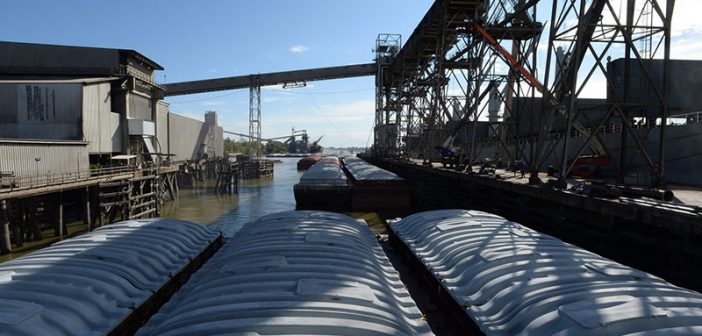You’ve probably heard a lot about “demand destruction” over the past few months, that fancy phrase that business leaders and economists like to use when describing how lockdowns have kept us all inside, producing a global economic slowdown as we travel less, buy less, build less and generally change our consumer habits.
The barge industry, which carries a great deal of the stuff that goes into heating and building our homes, powering our cars and planes and filling our pantries, has not escaped this “destruction.” There’s no question that barging has taken a deep hit from the downturn in cargo volumes for things like coal, crude oil, petroleum, iron ore and construction materials.
But there is a bright spot — the movement of grains like soybeans and corn for export is way up — offering a welcome and what is expected to be sustainable upward demand curve for barging well into the new year.
Barges are important players, moving about half of all grain exports which includes 60% of exported corn and 50% of exported soybeans, according to the U.S. Department of Agriculture, which said grain traffic moving through the Mississippi River has risen considerably during the past six weeks. This demand has also produced higher barge rates this fall.
The USDA’s Oct. 29 Grain Transportation Report (GTR) reported that weekly barge grain movements were consistently above average in August, September and October. And the trend is continuing this month. For the week ending Nov. 7, barge grain movements were up 27% over the same period last year, while during the week of Oct. 24, movements reached 1.2 million tons, 43% higher than the five-year average.
Calendar year-to-date grain barge tonnages on the locking portion of the Mississippi River system hit 30.1 million, 36% jump over 2019 and 1.5% higher than the five-year average for the same period. That’s pretty impressive, given there’s a global pandemic.
“The fact that both barge rates and volumes have been high suggests a high demand for barges has helped shape these trends rather than being due to changes in supply,” the USDA said.
The reason is an explosion in demand from China for soybeans and corn, which are used primarily as animal feed, and a drop in production of corn in Ukraine and soybeans in Argentina.
“We have witnessed remarkable recovery in China with pork production following the devastating impacts of the African swine fever,” Mike Steenhoek, director of the Soybean Transportation Coalition, Ankeny, Iowa, told me. “The broad consensus I’m hearing in agriculture is strong optimism that this trend in exports will continue. We certainly hope there will be no disruption of this due to political unrest or any other source.”
The USDA estimates that soybean and corn exports for the 2020-21 projected marketing year will be about 31% higher than last year, “which could support barge movements the remainder of the year.” Barge rates are projected to remain high into January suggesting that “barge operators are optimistic about export and grain barge demand for the rest of 2020 and the first quarter of 2021,” according to the Oct. 29 GTR.
This should make barge operators and their employees who haul dry bulk cargo and the agricultural industry happy, especially after suffering through a drop in demand over the past few years for grain products due to a trade war between the U.S. and China and the swine fever outbreak.
As Jim Wiesemeyer, Washington-based agriculture policy analyst for ProFarmer, told the annual symposium of the Waterways Council last week: “Trade will increase after (Covid-19) vaccine distribution, and this bodes well for the waterways system. Good for exports will be the Chinese need for import corn (and soybeans) as they are rebuilding their hog industry after the swine fever. In the next decade, China’s corn imports will be significant from a transportation perspective.”
Feels good to have some positive news for a change.




